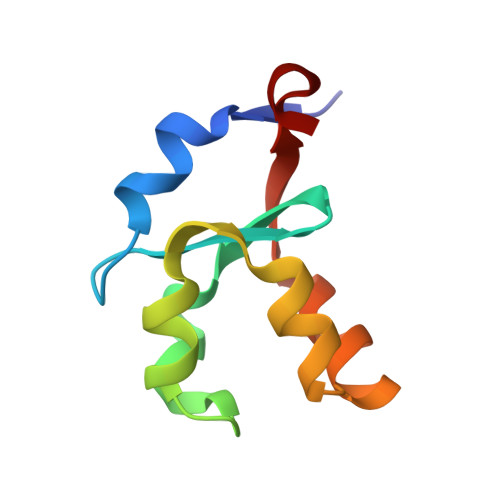Structure of the F58W mutant of cytochrome b5: the mutation leads to multiple conformations and weakens stacking interactions.
Shan, L., Lu, J.X., Gan, J.H., Wang, Y.H., Huang, Z.X., Xia, Z.X.(2005) Acta Crystallogr D Biol Crystallogr 61: 180-189
- PubMed: 15681869
- DOI: https://doi.org/10.1107/S0907444904031798
- Primary Citation of Related Structures:
1U9M, 1U9U - PubMed Abstract:
Phe58 of cytochrome b5 is involved in stacking interactions with heme and the axial ligand His63. To elucidate the contribution of the stacking interactions to protein stability, the crystal structures of the F58Y and F58W mutants were determined at high resolution. The structure of the F58Y mutant is basically the same as that of the wild-type protein. However, the mutation from Phe58 to Trp58 leads to difficulty in growing single crystals and results in a space-group change; the six molecules in the asymmetric unit form two groups that are related by a non-crystallographic twofold axis. The structure of F58W was determined using molecular replacement by making use of the non-crystallographic symmetry. The F58W mutation gives rise to multiple conformations of six side chains, a peptide linking two of the six residues and the extended propionic acid of the heme. The six molecules in the asymmetric unit of the F58W mutant structure are grouped into two types based on their conformations and one of the six molecules exhibits dual conformations. The stacking interactions are weakened owing to the increase/decrease of the angles between the indole ring of Trp58 and the His63/heme rings, which accounts for the lower stability of F58W compared with the wild-type protein.
Organizational Affiliation:
State Key Laboratory of Bio-organic and Natural Products Chemistry, Shanghai Institute of Organic Chemistry, Chinese Academy of Sciences, Shanghai 200032, People's Republic of China.















